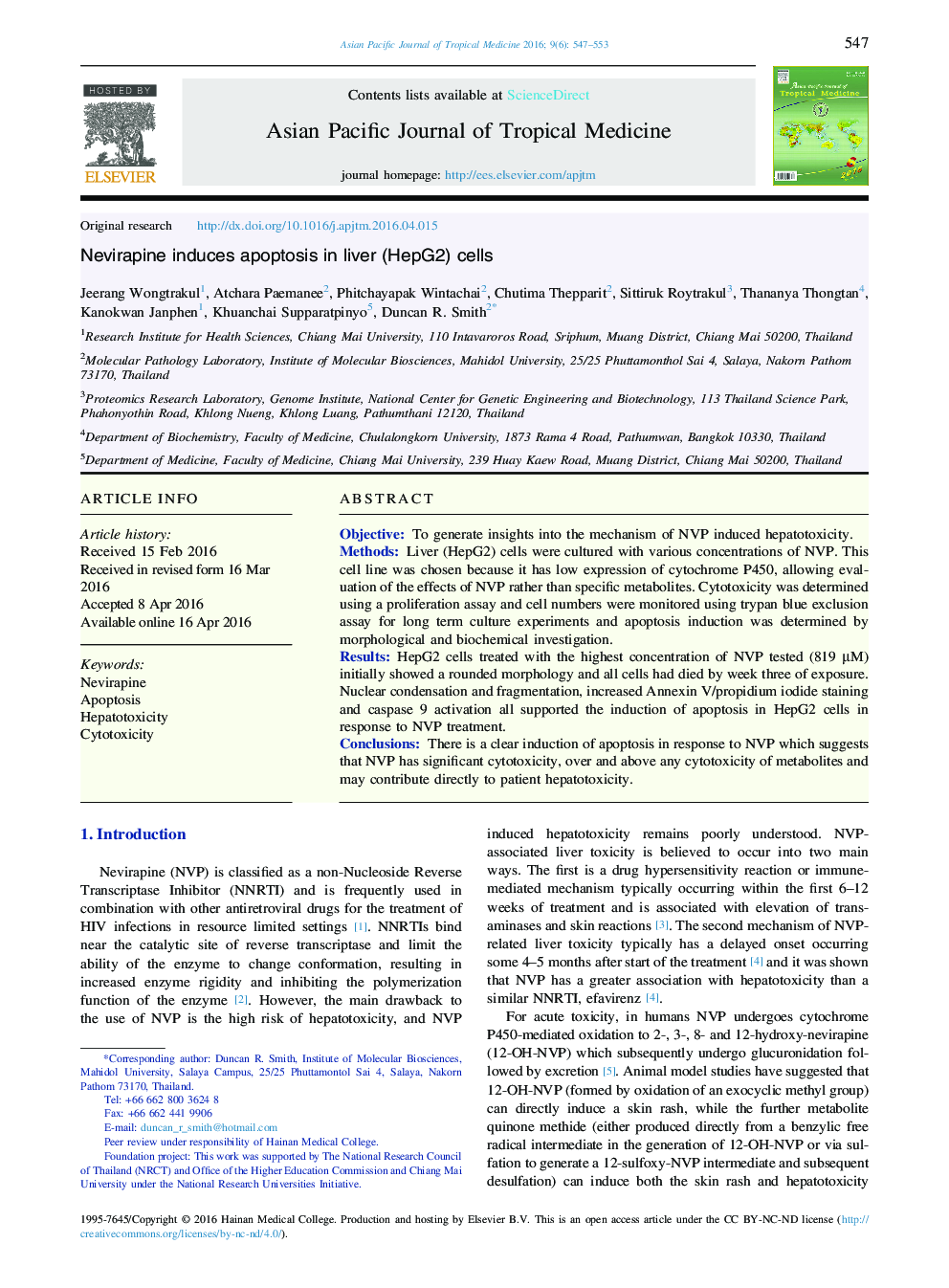| Article ID | Journal | Published Year | Pages | File Type |
|---|---|---|---|---|
| 3455162 | Asian Pacific Journal of Tropical Medicine | 2016 | 7 Pages |
ObjectiveTo generate insights into the mechanism of NVP induced hepatotoxicity.MethodsLiver (HepG2) cells were cultured with various concentrations of NVP. This cell line was chosen because it has low expression of cytochrome P450, allowing evaluation of the effects of NVP rather than specific metabolites. Cytotoxicity was determined using a proliferation assay and cell numbers were monitored using trypan blue exclusion assay for long term culture experiments and apoptosis induction was determined by morphological and biochemical investigation.ResultsHepG2 cells treated with the highest concentration of NVP tested (819 μM) initially showed a rounded morphology and all cells had died by week three of exposure. Nuclear condensation and fragmentation, increased Annexin V/propidium iodide staining and caspase 9 activation all supported the induction of apoptosis in HepG2 cells in response to NVP treatment.ConclusionsThere is a clear induction of apoptosis in response to NVP which suggests that NVP has significant cytotoxicity, over and above any cytotoxicity of metabolites and may contribute directly to patient hepatotoxicity.
